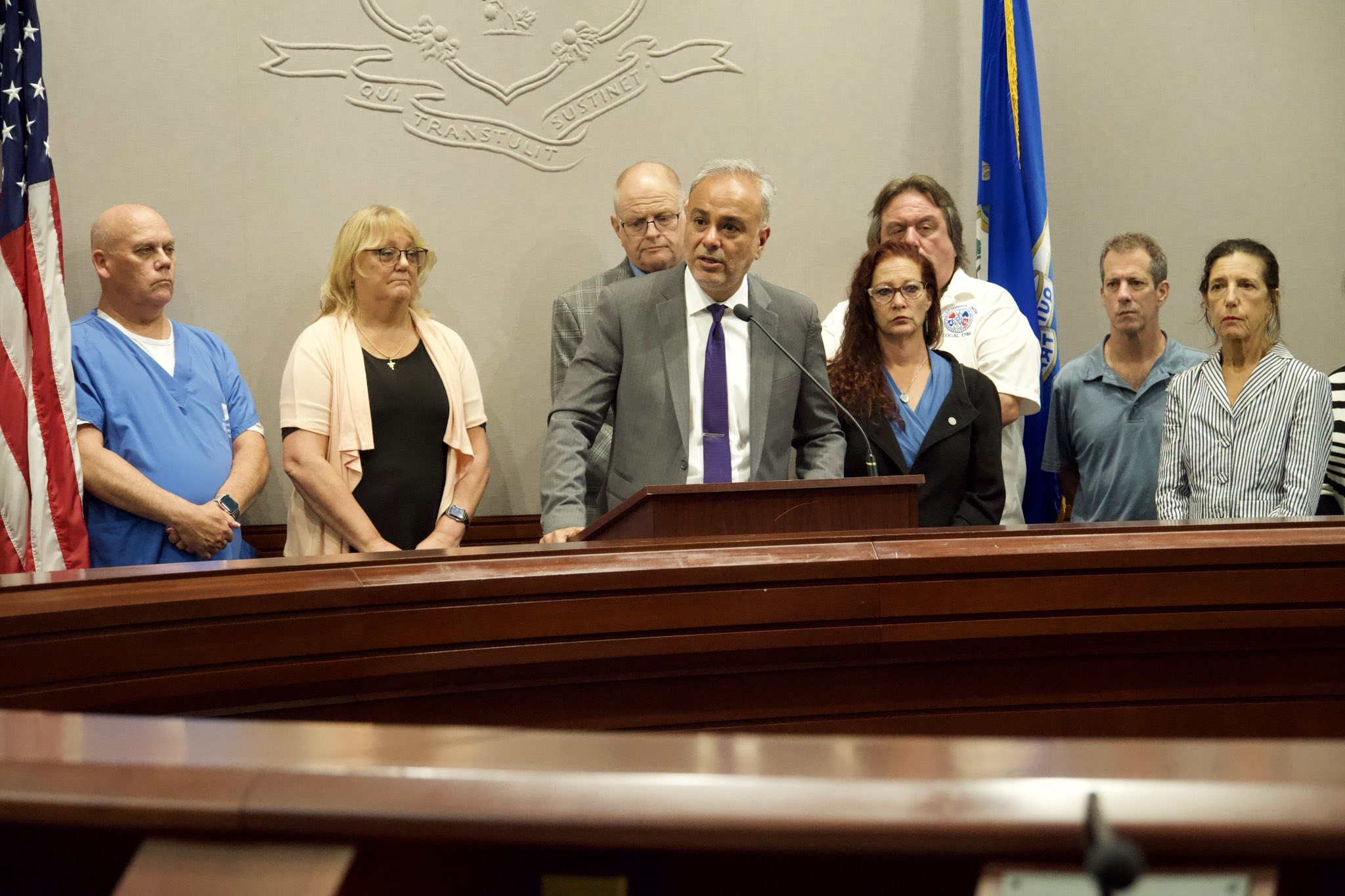Lawmakers and Labor Leaders Seek Support for Workers Struggling with Addiction

A group of Senate Democrats and Connecticut labor leaders called Tuesday for substance use disorders to be considered occupational hazards in some fields in an effort to provide support for impacted workers while reducing turnover-related costs for employers.
Sen. Saud Anwar, a South Windsor Democrat who co-chairs the legislature’s Public Health Committee, pitched the change during an afternoon press conference in the Legislative Office Building.
Backed by Sen. Jan Hochadel, D-Meriden, and representatives of several labor unions, Anwar described a link between common work-related injuries and addictions that often result from use of pain management drugs.
“They take pain medicines to try to continue to do their shift and whatever work is in front of them,” Anwar, a medical doctor, said. “This is a vicious cycle and before you know it they are dependent on these medications — highly addictive chemicals — and then they are seeking heroin and things that they can get relatively, unfortunately, more easy access to.”
Moving these conditions under the umbrella of occupational diseases would make affected employees eligible for prevention and treatment options as well as workers compensation. Anwar and Hochadel said they hoped to see the legislature address the matter during next year’s session.
Hochadel shared the divergent stories of two teachers who struggled with substance use stemming from stresses and injuries associated with their jobs. One, who was met with a punitive response from his employer, sank deeper into addiction and eventually died. The other, who was supported by her employer, recovered, remained on the job and has now been sober for 10 years.
“These are the kind of results that we should aspire to,” Hochadel said. “Results that end with workers back on the job rather than dying in a hospital bed. We have to recognize that substance abuse is an illness and an occupational hazard.”
Workers whose jobs require them to perform strenuous and repetitive tasks are often at heightened risk of on-the-job injuries and eventual substance use disorder.
Construction workers are injured at a rate 77% higher than the national average and more than half of workers’ compensation claims involve opioid prescriptions for on-job injuries, according to the Midwest Economic Policy Institute.
Kyle Zimmer serves as the director of health & safety and director of the members assistance program for the International Union of Operating Engineers Local 478. During Tuesday’s press conference, he said the effort to classify substance use disorder as an occupational hazard was long overdue. Zimmer described substance use as a safety issue impacting both workers and employers.
“It’s costing labor, it’s costing management a huge amount of money for lost time worked, insurance costs, replacing somebody that is either disabled or, God forbid, a fatal injury on the job site, which has happened,” Zimmer said. “I’m sick and tired of burying fellow tradespeople.”
Posted by Hugh McQuaid
Share this page: